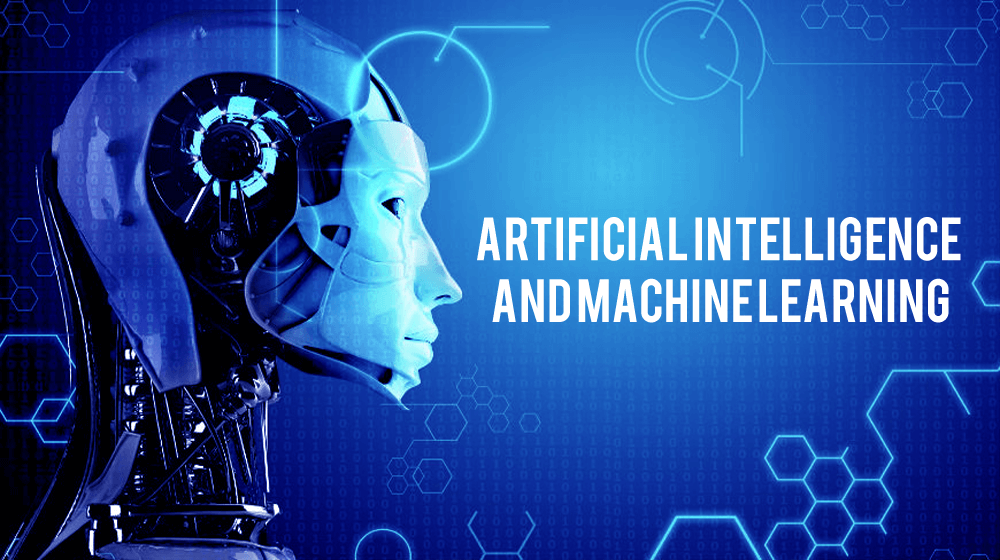Discover the essential facts about Artificial Intelligence (AI) and Machine Learning (ML). Understand the relationship between these technologies, their applications, and the key differences you need to know. Stay informed and make better decisions in the world of AI and ML.
Artificial intelligence (AI) and machine learning (ML) are frequently used interchangeably, particularly in discussions regarding big data and predictive analytics. Despite sharing similarities, these technologies diverge in terms of their scope, applications, and other aspects.
The utilization of AI and ML is on the rise as businesses seek to handle and scrutinize massive volumes of data, enhance decision-making processes, offer real-time recommendations and insights, and generate accurate forecasts and predictions.
Although AI and ML are interconnected, it is crucial to comprehend their distinctions. This piece will delve into the correlation between AI and ML, elucidating their practical variances.
What is machine learning?
Machine Learning (ML): ML is a subfield of AI that focuses on the development of algorithms and models that enable computers to learn and make predictions or decisions without being explicitly programmed. It involves the construction of mathematical models based on sample data, known as training data, to make accurate predictions or take actions.
ML algorithms can be broadly categorized into three types:
1. Supervised Learning: In supervised learning, models are trained using labeled data, where the input data is paired with the corresponding desired output. The algorithm learns to map inputs to outputs and can make predictions on new, unseen data.
2. Unsupervised Learning: In unsupervised learning, models are trained using unlabeled data, where the algorithm learns patterns and structures in the data without any predefined output. It is used for tasks like clustering, dimensionality reduction, and anomaly detection.
3. Reinforcement Learning: Reinforcement learning involves an agent interacting with an environment and learning to make decisions through trial and error. The agent receives feedback in the form of rewards or penalties based on its actions, allowing it to learn optimal strategies.
Applications of AI and ML: AI and ML have found applications in various domains, including:
- Natural Language Processing (NLP): Understanding and processing human language, enabling applications like chatbots, language translation, and sentiment analysis.
- Computer Vision: Analyzing and interpreting visual data, enabling applications like object detection, image classification, and facial recognition.
- Robotics: Enabling robots to perceive and interact with the physical world, performing tasks like object manipulation, navigation, and automation.
- Healthcare: Assisting in medical diagnosis, personalized treatment, drug discovery, and patient monitoring.
- Finance: Supporting fraud detection, algorithmic trading, risk assessment, and customer behavior analysis.
- Smart Assistants: Powering virtual assistants like Siri, Alexa, and Google Assistant.
- Recommendation Systems: Suggesting personalized recommendations based on user preferences, as seen in streaming platforms and e-commerce websites.
AI and ML are continuously evolving fields with vast potential for innovation and impact across industries. Ongoing research and advancements in algorithms, computing power, and data availability are driving the rapid progress in these areas.
Relationship between AI and ML
Artificial Intelligence (AI) and Machine Learning (ML) are closely connected, with ML being a subset of AI. Here’s how they are connected:
1. AI is the broader concept: AI is a broad field of computer science that focuses on creating intelligent machines capable of simulating human intelligence and performing tasks that typically require human intelligence, such as problem-solving, decision-making, understanding natural language, and recognizing objects.
2. ML is a subset of AI: Machine Learning is a subset of AI that involves the development of algorithms and models that enable computers to learn from data and make predictions or decisions without being explicitly programmed. ML algorithms allow machines to automatically learn and improve from experience by recognizing patterns and making adjustments based on feedback.
3. ML enables AI capabilities: ML techniques are a key component of many AI applications. By using ML algorithms, AI systems can analyze large amounts of data, recognize patterns, and make informed decisions or predictions. ML allows AI systems to adapt and improve their performance over time through training on datasets.
4. Data is crucial for both: Both AI and ML heavily rely on data. In AI, data is used to train models, provide examples, and define rules. ML algorithms require labeled training data to learn patterns and relationships. The quality and quantity of data play a significant role in the effectiveness and accuracy of AI and ML systems.
5. ML drives intelligent behavior in AI systems: ML enables AI systems to exhibit intelligent behavior by learning from data and adapting to new situations. ML algorithms allow AI systems to make predictions, classify objects, recommend products, and perform other tasks by leveraging patterns and insights derived from data.
What is The Differences Between AI and ML
Artificial Intelligence (AI) and Machine Learning (ML) are related concepts within the field of computer science, but they have distinct differences:
What is AI and ML learning
Artificial Intelligence (AI): AI refers to the development of computer systems that can perform tasks that typically require human intelligence. It focuses on creating intelligent machines that can mimic or simulate human cognitive abilities.
Machine Learning (ML): ML is a subset of AI that involves the development of algorithms and models that allow computers to learn from data and make predictions or decisions without being explicitly programmed.
Scope Of AI and ML learning
Artificial Intelligence (AI): AI is a broad field that encompasses various subfields and techniques, including machine learning. It aims to replicate human intelligence, including understanding natural language, solving complex problems, recognizing patterns, and making informed decisions.
Machine Learning (ML): ML is a specific approach within AI that focuses on the development of algorithms and models that enable computers to learn from data and improve their performance on specific tasks over time.
Approach Of AI and ML learning
Artificial Intelligence (AI): AI can be achieved through various approaches, including rule-based systems, symbolic reasoning, expert systems, natural language processing, computer vision, and machine learning. It encompasses a wide range of techniques and methodologies to simulate human intelligence.
Machine Learning (ML): ML specifically focuses on training algorithms to learn patterns and insights from data. It involves feeding large amounts of data to algorithms, enabling them to identify patterns, make predictions, or take actions based on the learned information.
Data Dependency Of AI and ML learning
Artificial Intelligence (AI): AI systems may or may not rely on large amounts of data for their functioning. They can utilize predefined rules, expert knowledge, or a combination of techniques to perform tasks.
Machine Learning (ML): ML heavily relies on data. It requires large datasets to train algorithms and learn patterns. The more diverse and representative the data, the better the ML models can generalize and make accurate predictions.
Human Intervention Of AI and ML learning
Artificial Intelligence (AI): AI systems can be programmed explicitly with predefined rules or expert knowledge. They may require human intervention to set rules, define objectives, or provide initial training.
Machine Learning (ML): ML algorithms learn from data and improve their performance through iterations without explicit programming. Once trained, they can make predictions or decisions independently based on the learned patterns.
- YOU MAY ALSO LIKE>>> Top Fully Funded Scholarships to Study in Canada 2023
Benefits of using AI and ML
The combined use of Artificial Intelligence (AI) and Machine Learning (ML) offers numerous benefits across various industries and applications. Here are some key advantages of using AI and ML together:
Enhanced Decision-Making: AI and ML enable data-driven decision-making by analyzing vast amounts of information and identifying patterns and insights that humans may miss. ML algorithms can process complex data sets and provide recommendations or predictions, empowering businesses to make more accurate and informed decisions.
Automation and Efficiency: AI and ML can automate repetitive and mundane tasks, freeing up human resources to focus on more complex and creative endeavors. By automating processes, organizations can achieve higher efficiency, improved productivity, and cost savings.
Personalization and Customization: AI and ML enable personalized experiences by analyzing user preferences, behaviors, and historical data. This allows businesses to tailor products, services, and recommendations to individual customers, enhancing customer satisfaction and loyalty.
Improved Customer Service: AI-powered chatbots and virtual assistants can provide instant and personalized customer support, available 24/7. ML algorithms can analyze customer interactions and sentiment, helping to address customer needs more effectively and deliver a better customer experience.
Advanced Data Analysis: ML algorithms excel at analyzing large and complex data sets, identifying patterns, and extracting valuable insights. This enables businesses to gain deeper understanding and make data-driven decisions, leading to improved operational efficiency, targeted marketing campaigns, and optimized resource allocation.
Fraud Detection and Security: AI and ML techniques are effective in detecting anomalies and identifying patterns indicative of fraudulent activities. ML algorithms can analyze vast amounts of data in real-time, helping to identify potential security threats, fraud patterns, and cyber-attacks.
Healthcare Advancements: AI and ML have significant potential in healthcare, assisting in early disease detection, personalized treatment plans, and medical research. ML algorithms can analyze patient data, medical records, and research papers to provide valuable insights, leading to improved diagnostics and patient outcomes.
Predictive Maintenance: AI and ML can optimize maintenance processes by analyzing sensor data, equipment performance, and historical maintenance records. This enables predictive maintenance, where potential failures or maintenance needs are identified in advance, minimizing downtime and optimizing maintenance schedules.
Autonomous Systems: AI and ML enable the development of autonomous systems and vehicles. ML algorithms can process real-time sensor data, make decisions, and adapt to changing environments, leading to advancements in self-driving cars, drones, robotics, and smart home devices.
Continuous Improvement: AI and ML systems can continuously learn and adapt based on new data and feedback. This enables ongoing improvement and optimization of models and algorithms, ensuring that the AI systems stay up-to-date and provide accurate results.
Applications of AI and ML
Artificial Intelligence (AI) and Machine Learning (ML) have numerous applications across various industries. Here are some common areas where AI and ML are applied:
1. AI in Healthcare: AI and ML can assist in medical diagnosis, image analysis, drug discovery, patient monitoring, and personalized medicine. They help improve disease detection, treatment planning, and patient outcomes.
2. Finance: AI and ML algorithms are used for fraud detection, risk assessment, algorithmic trading, credit scoring, and customer service automation in the financial sector. They enable more accurate predictions and efficient decision-making.
3. Retail and E-commerce: AI and ML are used for personalized product recommendations, demand forecasting, inventory management, price optimization, chatbots for customer support, and virtual shopping assistants.
5. Manufacturing: AI and ML are employed for predictive maintenance, quality control, supply chain optimization, process automation, and robotics. They help streamline operations and improve efficiency.
6. Transportation: AI and ML are applied in autonomous vehicles, route optimization, traffic management, predictive maintenance of vehicles, and logistics planning. They aim to enhance safety, efficiency, and sustainability in transportation systems.
7. Natural Language Processing (NLP): NLP techniques enable language translation, sentiment analysis, chatbots, voice assistants, and text summarization. They enhance human-computer interactions and enable automated language processing.
8. Cybersecurity: AI and ML can detect and respond to cybersecurity threats, identify patterns in network traffic, analyze user behavior for anomaly detection, and enhance data protection measures.
9. Energy and Utilities: AI and ML can optimize energy consumption, predict power demand, improve energy grid management, enable smart metering, and facilitate renewable energy integration.
10. Agriculture: AI and ML techniques are used for crop monitoring, yield prediction, disease detection in plants, smart irrigation, and precision agriculture. They help increase crop productivity and optimize resource usage.
11. Human Resources: AI and ML can automate recruitment processes, analyze resumes, assess candidates, predict employee attrition, and provide personalized learning and development recommendations.
13. Gaming: AI and ML algorithms are employed in game development for character behavior modeling, opponent AI, procedural content generation, and adaptive difficulty levels.
14. Social Media and Marketing: AI and ML techniques are used for sentiment analysis, targeted advertising, social media monitoring, content recommendation, and customer segmentation.
Conclusion
In conclusion, understanding the key facts about Artificial Intelligence (AI) and Machine Learning (ML) is crucial in today’s data-driven world. AI and ML are often used interchangeably but differ in their scope, applications, and more.
Businesses are increasingly adopting AI and ML to process vast amounts of data, improve decision-making, provide real-time recommendations and insights, and generate accurate predictions and forecasts. These technologies have transformative potential across various industries.
It is essential to grasp the connection between AI and ML and recognize their practical distinctions. By staying informed about these technologies, you can harness their power effectively and make informed decisions in the ever-evolving landscape of AI and ML.







